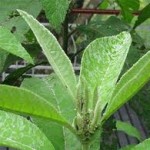Sambong is a camphor aromatic plant which can be found almost everywhere in the Philippines.
It is a shrub that thrives in open plain, rolling to mountainous terrain of which it does not need a formal propagation because it grows together with other common weeds, shrubs and trees that are propagated by nature.
Long before the plant has been found to have a therapeutic value in the medical world, rural folks had it in the Philippines traditionally used the aromatic plant, by decocting the roots or leaves in the treatment of various ailments.
The shrub aromatic plant is among the ten approved herbal plant by the Philippine Department of Health (DOH) as an alternative medicine in treating specific disorders.
It is an anti-urolithiasis and work as a diuretic agent which helps dispose of excess water and sodium (salt) in the body.
Sambong has the essential camphor oils that is particularly safe and effective treatment of hypertension, dissolving kidney stones and other ailments, according to the Department of Science and Technology (DoST).
The roots of sambong is used to treat cough, colds, asthma, bronchitis, other respiratory problems while its leaves is used to treat stomach ailment, headache, mild hypertension, astringent for wounds and cuts, in dissolving kidney stones and it has been used as postpartum bath for women.
Sambong is not only used as herbal medicine in the Philippines, but it is used by the Javanese and Chinese as tea for the relief of cough, the Europeans used it in treating cataract infection.
In Cambodia for the treatment of skin infection while other parts of the world as treatment for dysentery, chronic uterine discharges, beri-beri and lumbago.
